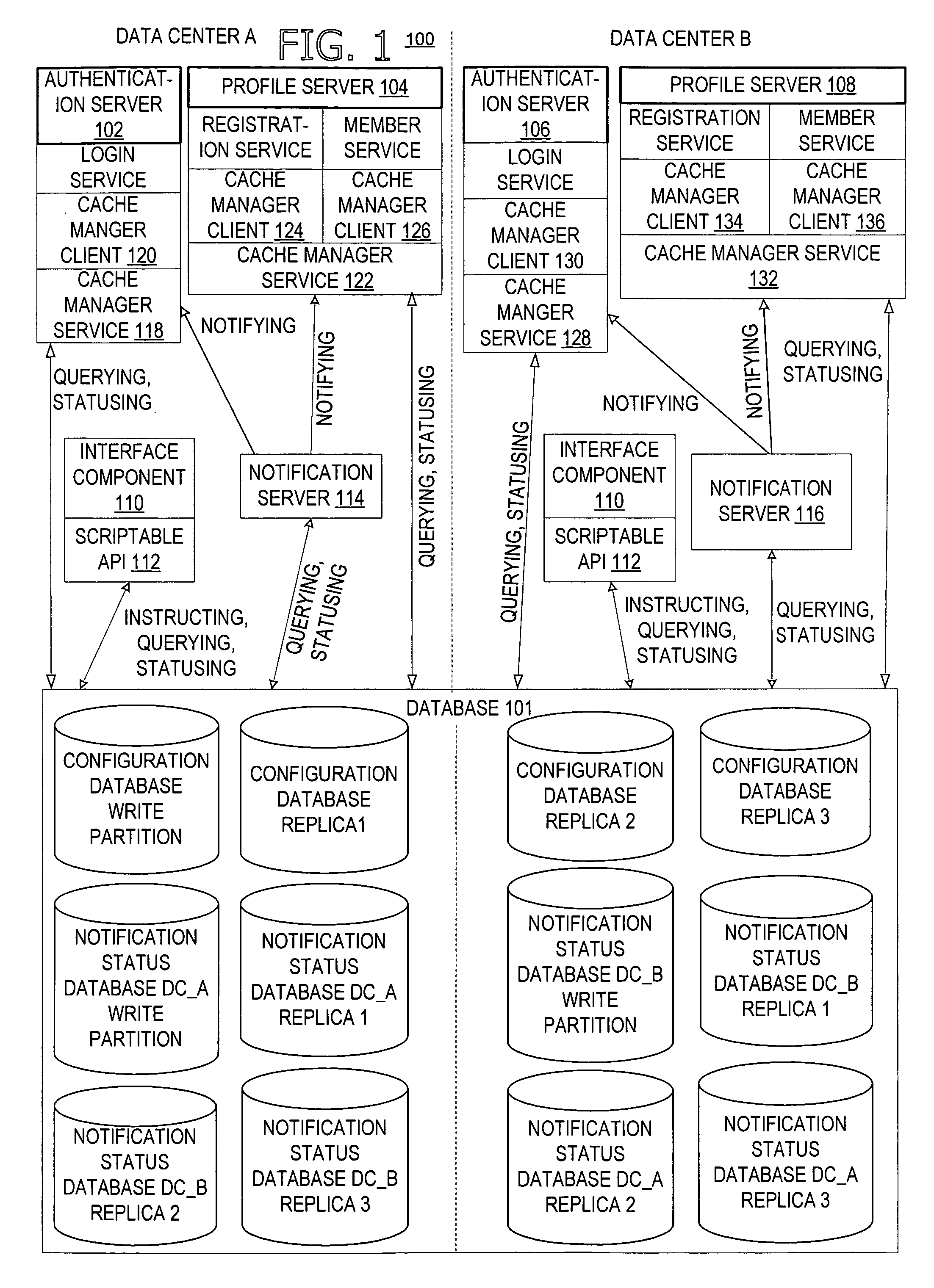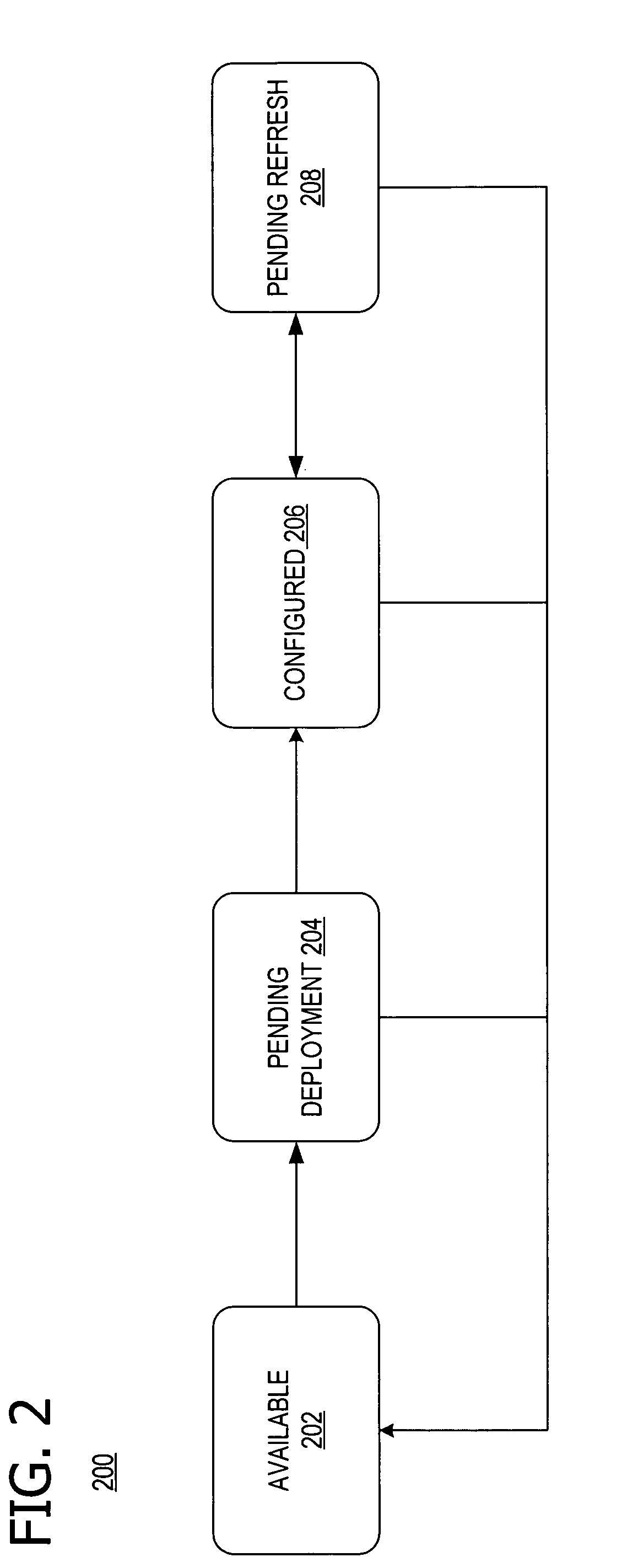Centralized configuration data management for distributed clients
a configuration data and client technology, applied in the field of managing clients, can solve the problems of increasing complexity of managing or organizing a relationship among different clients, data (e.g., ) across different server groups or service classes, and achieve the effect of convenient implementation
- Summary
- Abstract
- Description
- Claims
- Application Information
AI Technical Summary
Benefits of technology
Problems solved by technology
Method used
Image
Examples
Embodiment Construction
[0026]FIG. 1 generally shows an exemplary environment 100 in which embodiments of the invention may be utilized. A memory area such as a database 101 is adapted to store topology data identifying a relationship among different clients and / or configuration data. For example, the database 101 may be a database such as described in a co-pending U.S. patent application entitled MANAGING CLIENT CONFIGURATION DATA (Attorney Docket Number MS#307877.01 (MSFT 5112)), which is incorporated by reference herein. In general, the configuration data stored on a particular client defines an operation of the particular client. According to one embodiment of the invention, the client may be a server, a service, an application program, or an operating system component. In the following description of the invention, a server executing a service is used as a particular example of the client for illustration purposes.
[0027] In one embodiment of the invention, the topology data defines a service class, w...
PUM
 Login to View More
Login to View More Abstract
Description
Claims
Application Information
 Login to View More
Login to View More - R&D
- Intellectual Property
- Life Sciences
- Materials
- Tech Scout
- Unparalleled Data Quality
- Higher Quality Content
- 60% Fewer Hallucinations
Browse by: Latest US Patents, China's latest patents, Technical Efficacy Thesaurus, Application Domain, Technology Topic, Popular Technical Reports.
© 2025 PatSnap. All rights reserved.Legal|Privacy policy|Modern Slavery Act Transparency Statement|Sitemap|About US| Contact US: help@patsnap.com



